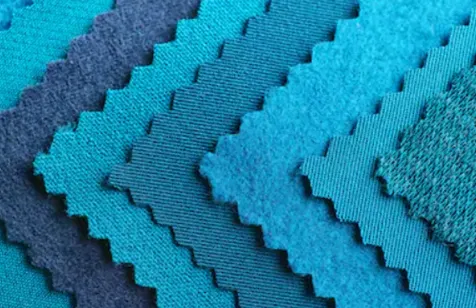Certified purity
🌿 Certified Purity: How SUKHINO’s Herbal-Dyed Fabrics Passed Global Safety Standards
Nature Meets Science in Every Thread
At SUKHINO, we believe that clothing should nurture — not harm — your skin or the planet. Our latest Intertek Laboratory Test Report (No. TRPA24000928) confirms that our herbal-dyed woven and knitted fabrics meet the highest international safety benchmarks for babywear and skin-friendly textiles.
What Was Tested
Samples of our fabrics in Neem Ivory, Turmeric Yellow, and Madder Pink were analyzed by Intertek India Pvt. Ltd., a globally recognized testing authority. The fabrics, made of 100% organic cotton, were tested for:
Formaldehyde content :
Formaldehyde has been detected in organic cotton clothing, sometimes at levels higher than those found in conventional cotton garments. A study analyzing clothing for pregnant women, babies, and toddlers found that organic cotton items, particularly bras and panties for pregnant women, had significantly higher formaldehyde levels (11.6 mg/kg and 27.1 mg/kg, respectively) compared to their conventional counterparts (7.46 mg/kg and 6.38 mg/kg). This finding is attributed to the fact that the term “organic cotton” refers solely to pesticide-free cultivation and does not regulate the chemical additives used during textile manufacturing.
Azo dyes and carcinogenic dyes :


These dyes can be cleaved by skin bacteria or metabolic processes, releasing aromatic amines (AAs), some of which are known to be mutagenic and carcinogenic. While the European Union bans azo dyes that release any of the 22 known carcinogenic aromatic amines, a substantial number of azo dyes—potentially up to 38% of those in use—can release non-regulated mutagenic aromatic amines, which are not currently subject to strict controls. This poses a risk, as these compounds can be absorbed through the skin and persist in the environment due to poor biodegradability, contributing to pollution and potential long-term health hazards. Consequently, organic clothing brands often emphasize the use of azo-free dyes to ensure products are free from these harmful chemicals, with certifications like GOTS verifying the absence of such dyes.
Chlorophenols :
Chlorophenols are toxic contaminants that can be present in textiles, including organic clothing, primarily as a result of industrial processes. They are used as preservatives in textiles and leather materials to protect against fungi and bacteria during storage and transport, and may also be present as impurities from raw materials used in dye production or formed during bleaching processes with elemental chlorine. These compounds have been identified in textile dyeing sludge, where they accumulate and pose a medium to high environmental risk due to their toxicity and persistence. High-chlorine phenols account for the greatest proportion of the 19 chlorophenols detected in such sludge, with total concentrations ranging from 170.90 to 6290.30 ng g⁻¹ dry weight.
APEO/NPEO surfactants :
Alkylphenol ethoxylates (APEOs), particularly nonylphenol ethoxylates (NPEOs), are surfactants historically used in textile processing for their cleaning and emulsifying properties, but they are now heavily restricted due to significant environmental and health concerns. NPEOs are persistent in the environment and can degrade into nonylphenol (NP), a compound known to be an endocrine disruptor that mimics estrogen and can cause reproductive and developmental issues in aquatic life, including feminization of fish. These chemicals are toxic to aquatic organisms and can bioaccumulate in the food chain, posing risks to wildlife and potentially to humans.
Extractable heavy metals :


Organic clothing is generally expected to have lower levels of hazardous substances, including extractable heavy metals, compared to conventional textiles. However, heavy metals can still be present in organic fabrics due to environmental contamination during the growth of natural fibers like cotton, or from processing aids and dyes used in production. Testing for extractable heavy metals typically involves simulating human perspiration using an artificial acidic sweat solution, such as ISO 105-E04 (testing solution II), to determine the amount of metals that could potentially be absorbed through the skin. Common analytical techniques used for this purpose include atomic absorption spectrometry (AAS), inductively coupled plasma optical emission spectrometry (ICP-OES), and microwave plasma-atomic emission spectroscopy (MP-AES), which allow for precise quantification of metals like chromium, cadmium, lead, copper, and nickel.
pH levels and skin compatibility:


The pH level of skin is naturally slightly acidic, typically ranging from 4.5 to 6.0, with an average around 4.7 to 5.5. This acidity is maintained by the skin’s “acid mantle,” a protective film composed of sebum, sweat, and lipids that helps defend against pathogens and supports a healthy microbiome. The skin’s pH can vary slightly depending on body location and individual factors, and it tends to become more neutral with age, potentially increasing susceptibility to irritation.
Result: 100% Free from Harmful Chemicals
Every single test returned a result of BDL (Below Detection Limit) — meaning no toxic residues were found in any of the samples.
✅ No Formaldehyde Detected – Safe for even newborn skin.
✅ No Azo or Carcinogenic Dyes – Naturally colored with herbs, not synthetic chemicals.
✅ No Heavy Metals or Chlorophenols – Gentle on skin and planet.
✅ Balanced pH (6.7–6.9) – Perfect for sensitive baby and adult skin.
These results validate SUKHINO’s promise: pure, safe, and sustainable fabrics inspired by Ayurveda.
The Power of Herbal Dyes
Each color in our collection is derived from time-honored herbs:
- 🌿 Neem (Azadirachta indica) – Antibacterial and cooling.
- 🌼 Turmeric (Curcuma longa) – Healing and anti-inflammatory.
- 🌸 Madder (Rubia cordifolia) – Natural detoxifying properties.
Together, these herbs infuse wellness into every thread — making your clothing an extension of natural healing and mindful living.
Why This Certification Matters
For today’s conscious consumers, transparency is everything. Intertek’s independent verification assures that SUKHINO fabrics are globally compliant with REACH Regulation (EC) No. 1907/2006, and free from restricted substances under European textile standards.
Whether it’s babywear, maternity wear, yoga clothing, or eco-living essentials, you can now wear wellness — backed by science.
Clothing as the Second Skin
We wear clothes almost 24 hours a day. If our garments carry toxic dyes or chemical finishes, they directly affect our skin, health, and the environment.
SUKHINO ensures that your second skin stays as pure as nature intended, letting your body breathe and heal naturally.
SUKHINO – “May All Beings Be Happy and Free”
Our mission is to reconnect humans with nature through safe, sustainable clothing. Certified by Intertek, crafted with herbs, and woven with care — SUKHINO is where wellness meets wearability.
